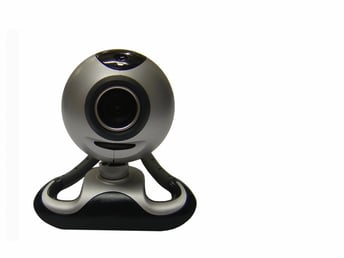Our industry typically relies on hands-on learning to be successful. In this post, we’re going to talk to you about what we did as a company to innovate for our classes during the Covid-19 Pandemic.
We have many industry instructors that have worked with us for decades that offer niche courses and certifications. These instructors took the opportunity to develop creative solutions for all of our educational courses and make sure that you were provided with the same quality that you have come to expect from us.
Let’s dive right into the Top 5 Lessons that we learned while offering virtual classes so that you can get a better understanding of our commitment to finding the best way to educate you.

1. You can limit class size and create meaningful content to enhance the participant experience
The first thing to understand is that the transition to virtual learning was not a swift, simple move from classrooms to computer screens. The basic notions of instruction, attendance, and testing that were so easily managed in a classroom setting became a challenge. It required constant adjustments until we found solid ground.
We learned that there were a variety of courses that we could effectively teach online, and with the support of our instructors, we opted for Zoom as our platform of choice.
We limited the class size to ensure a high-quality learning experience.
Certification exams with the IICRC were rapidly transferred to an online proctoring platform. For the most part, our customers supported the new learning experience.
As it grew later in 2020 and we realized that online education would go on for longer than we thought, our instructors started to get more innovative in their approach to teaching. They created detailed videos and performed live-streamed hands-on demonstrations to further increase our class offerings and maintain an authentic learning experience.
2. Virtual Technology is effective for live demonstrations, especially when combined with live Q&A sessions
Authentic learning is designed to connect what is learned in the classroom to real-world issues and problems. This is SO important in our industry, and instructors that have ‘been there and done that are much better equipped to teach these basic ideas than anyone else!
We wanted to ensure that our customers were able to get all necessary certifications AND that they also received the real-life and hands-on skills that they needed to continue working throughout the pandemic.
For example, IICRC Instructor Doug Heiferman along with Tom Monahan of Centrum Force taught our Live-Steamed Rug Cleaning Workshop.
“Doug and I teaching real-time demonstrations on the wash floor is the best alternative when in-person is not available. Why? Because we have multiple cameras going that are managed by our audio and visual technician, Cam Hicks. Cam assists with fielding questions and spotlighting the best camera angles for the circumstance at any given moment,” Tom states.
“This has been very helpful allowing us to exchange with students as we are performing the hands-on work. We make a good teaching team!”
Doug has taken this opportunity to reflect on how to sharpen his teaching skills so that his students could apply what they learn on the job.
“The online world challenged me to become a better teacher. I immediately focused on new skills to engage students and help them learn in this new environment,” Doug describes.
Doug understands the importance of staying abreast of the new and updated capabilities of online platforms.
“The more experience an educator has with virtual technology is the catalyst to engaging students and providing the ultimate interactive learning experience.”

3. In cases where the hands-on learning component was required, we sent students the supplies and they were able to teach others virtually
John Carter, another of our IICRC Instructors, teaches two classes that have intensive hands-on segments-- Carpet Repair and Reinstallation Technician (RRT) and Color Repair Technician (CRT).
It took the Color Repair Committee a bit longer to get that course approved for live stream since the hands-on component for that class is required. To work around this issue we created a system that allowed us to send each student a set of dyes and carpet samples to work with.
Each student must have a camera focused on their work area for the hands-on portion and John confirms that it has worked out very well, adding, “One major thing I have noticed about coaching the students via live stream is that when I am coaching a particular student, all the students in the class get the benefit of that individual coaching.”
4. If you can’t be there in person a video demonstration is a powerful teaching tool and it can be watched multiple times
The IICRC approved the RRT class for live-stream because the hands-on is not required for student participation, they just need to see the instructor demonstrating all of the essential repairs.
“This required me to create quality videos for all of those repairs that I use for presentation during the course. I also had to modify the course manual to provide a better resource for being able to then perform the repairs in the field,” John explains.

5. Engaging students in a virtual format is better for learning as opposed to merely lecturing them
In the case of Richard (Dick) Driscoll, a 20-year veteran IICRC Instructor, it was a tough transition to learn how to teach virtually.
“I am so used to being with the students-- reading their body language, looking into their eyes-- so that I could physically see who is ‘getting it’ and who is ‘lost.’ This does not work in virtual training,” Dick recounts.
While Dick has always used various forms of visual content while teaching he has come to realize how important they truly are in virtual instruction. For example, instead of working with the students to physically build hands-on containment, he now has to present a “how to build containment” video clip.
“I have changed the way I teach in that, instead of lecturing, I present a scenario with a question as to ‘what would you do?” Dick adds.
“Then I ask the students to think about it and give them two choices as to what should be done. The students vote on door 1 or door 2, and then both sides have to justify their decision and their reasoning for voting on door 1 or 2.
I then let the students debate/disagree about their decision, which leads to some very interesting discussions. I become the referee and at the end advise the students on what should be done. This format requires the student to think, and defend their decision, thus making it an active learning experience,” Dick summarizes.
In other words, it’s easy to get lost in a lecture that drones on for hours. It’s much easier (and possible) to be involved in the learning experience when you have to engage with the content and problem-solve.
Conclusion and Main Takeaways
Our instructors feel that they are better teachers now than a year ago and are always striving for continual improvement.
The students have definitely recognized this and shown their appreciation. We have received positive feedback ranging from gratitude for the instructor to students announcing their success on an exam, or talking about how they have honed their skills after having participated in a live-streamed course.
If this pandemic has demonstrated anything, it is that change is constant.
While many of us are anxious for in-person classes, we also expect to continue offering virtual training and because of this, we will continue to evolve and reimagine our educational offerings.
Education is something that can be effectively offered in a variety of different formats, and we are committed to being industry leaders as we strive to always innovate.
Our ultimate goal, whether in-person or online, is to continue to offer quality education and training that meet the needs of our customers.
Enjoyed reading this post? Read the following articles:




